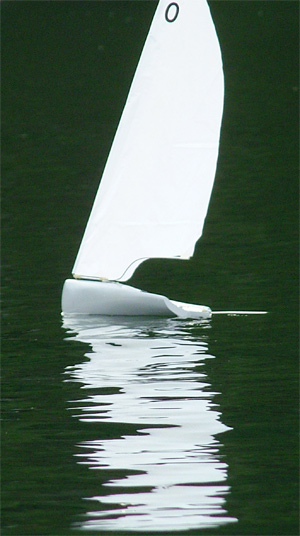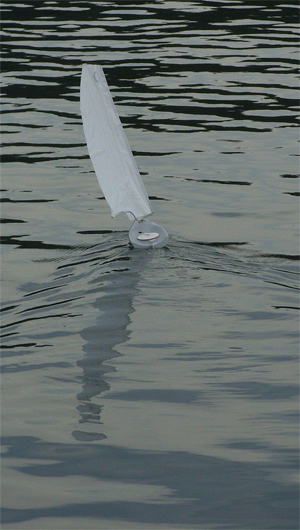angus, i don’t see it as copying. to start out with all of my boats are designed from scratch, with a specific performance goal - something about footys i want to improve. and i am going to try to be as innovative in my process as possible. however, sometimes in looking for answers, i find that somebody else has already done most of the guess work for me, for example:
to start out with all of my boats are designed from scratch, with a specific performance goal - something about footys i want to improve. and i am going to try to be as innovative in my process as possible. however, sometimes in looking for answers, i find that somebody else has already done most of the guess work for me, for example:
footys have a horrid tendency to nose dive. we all know this. now, Mini 6.5s, and Open 60s (as well as many other ocean racers) can’t afford to nose dive the way our boats do… it could be fatal. so they have had to figure out solutions. so if i am trying to design a boat that doesn’t nose dive as much, i am going to spend a little time looking at the boats that have already (to some extent) solved to problem. then i find that, “interesting, a narrow entry, combined with a flare to the deck, and a lot of reserve bouyancy helps keep these big boats from having these problems…”
at this point in the design, one thing leads to another, if you have a broad bow, the stern naturally becomes wider. also, when designing a “Muscle Footy” many of the design concepts are much the same as in designing a mini or 60. in relative terms, the “sea states” a footy will encounter are roughly similar to those a Mini will come across. also, just as with a Mini or 60, the footy is a box rule. in our case, we have unlimited sail area. so, obviously, one wants to carry as much sail as possible while using up as little displacement as possible as ballast. so, what do we come up with? wide, highly stable designs that can carry less in the bulb and still carry - in the case of Orange Crush - probably twice the sail area that Moonshadow carries. unfortunately for the originality of the look, both the Mini and the 60, and so many others have been trying to do this same thing, for a little bit longer than us. thus, it is a sad inevitablity that our boats are going to share appearances.
i know that much of the Minis’ and the 60s’ success relies on their use of canting and movable water ballast. however, there are parts of their design concepts that - to me - make them much more favorable as footys; they are naturally more bouyant, they have higher displacements, they can carry more sail, the hull form is more stable, when you heel them over, the wetted surface drops significantly, and the waterline length increases, etc, etc, the list goes on.
finally, it may be the same syndrome as every young boy thinking his puppy is the smartest dog in the world, but at this point, i think that my “American Muscle Footy” is just as fast as you brits with your ultra light pencils. honestly, i can’t wait to finally get to put Orange Crush side by side with Angus’ Moonshadow and see who is on top after a couple of laps.:devil3:
as i said at the top, i don’t feel in any way, shape, or form, what we americans are doing with our “Muscle Footys” is copying big boats because they look cool. honestly, i think they are faster and better suited to racing in the footy class.
disclaimer
[b][i]if this has offended anyone, please view it at the rantings of a biased, “American Muscle” builder, and future Mini 6.5 hopeful. lol
over and out!:D:lol:
[/i][/b]




 …
…
 as if they prove somehow that our broader church is wrong.
as if they prove somehow that our broader church is wrong.